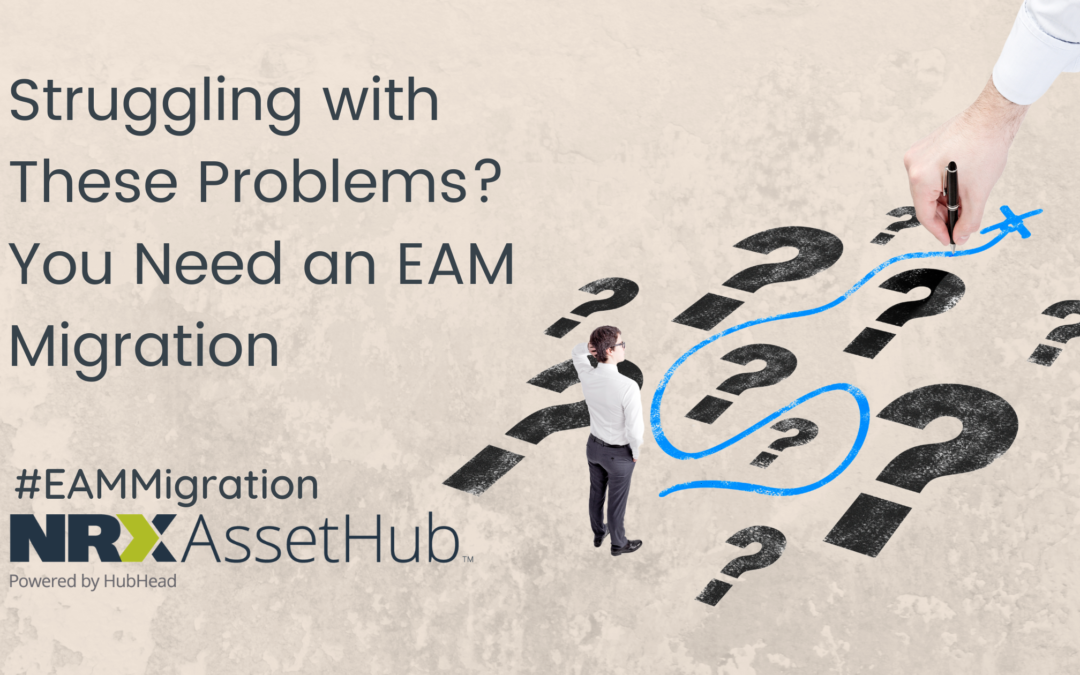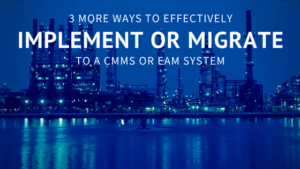Whether you have an old legacy system or your current EAM/CMMS system just isn’t cutting it, migrating to a new EAM system is a lengthy project. Even though it may seem overwhelming, many asset-intensive companies get to a point where an EAM migration becomes very necessary. While migrating to a new EAM or CMMS system, changes to your asset data or maintenance procedures often occur.
Keeping your existing legacy system in place can be costly for your organization. You could also be losing money from your current EAM/CMMS system that is inefficient or laced with bad data. If you’re struggling with the following issues, you should probably consider switching to a new EAM/CMMS system:
1. Incompatibility
As our world becomes increasingly digitized and continues to embark on significant technological advances, your EAM/CMMS system being compatible with different devices, browsers, and new technology should be a no-brainer. Access anytime, anywhere is one of the underlying principles of effective and efficient data management. Maintenance staff needs to access data regardless of location to confirm machinery specifics, use visual features, or search part catalogues on time. If your current EAM or legacy system has compatibility issues, it’s time to make the switch.
2. Not user-friendly
As mentioned earlier, all maintenance workers should have access to the correct information at all times, from any site. With that being said, to make their job more efficient, your EAM system should be easy to use. This includes features for reporting, visualizing data, asset hierarchies, and other elements to enhance operations. Within this user experience, an ideal EAM/CMMS system will also have all the necessary functions you need to conduct operations according to your targets. Some of these functions include PM scheduling and work order management. Most importantly, your EAM system should be versatile and have the ability to serve different needs within the business. If your current system is challenging to use or extract data from, you should consider switching to a new EAM system.
3. Inadequate reporting
Data reporting is a crucial function for every asset-intensive business. This keeps maintenance workers informed on what takes place at each facility regularly. With this information, key performance indicators can be identified and give insight into asset performance. Also, knowing when a machine needs maintenance, the cause of malfunctions, or downtime costs are critical bits of information that keep operations running smoothly. If your current system cannot provide such information, this can significantly slow down processes and lead to errors. Again, in this case, you should consider implementing a new EAM system.
4. Lack of collaboration
Again, going back to having access to information anytime and anywhere, maintenance staff should easily collaborate within the system. This is especially important for large organizations with large teams. All team members should be able to access information simultaneously without interference. If your current system limits the number of people that can access or collaborate on the platform, your alarm bells should be ringing.

Time to make the switch
If any of the problems listed above sound familiar, the time has come for you to make the switch to a new EAM or CMMS system. The NRX AssetHub software solution provides a smooth integration from your old EAM or legacy system to a new one, with data management services to keep your data clean and abide by new maintenance practices. If you are planning an EAM data migration and need assistance working with complex data, feel free to book a demo with our team, and we would be happy to get in touch with you!
3 More Ways to Effectively Implement or Migrate to a CMMS or EAM System
Effectively Implementing or Migrating to a CMMS or EAM System
What Could Go Wrong With An EAM Migration?
Share this article




